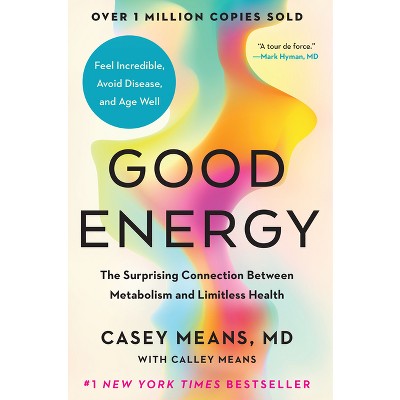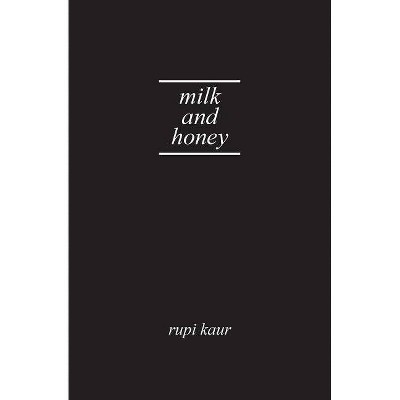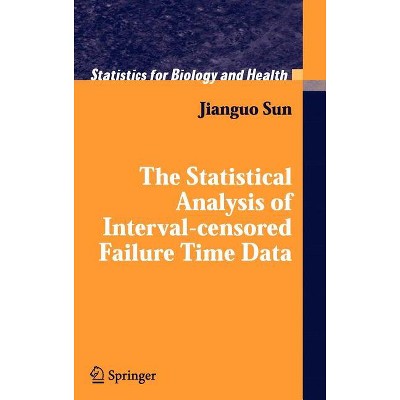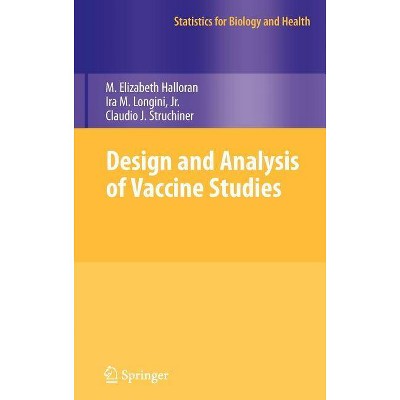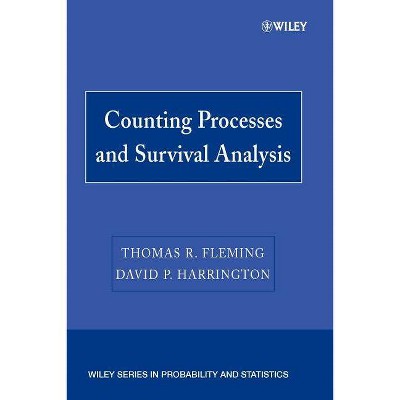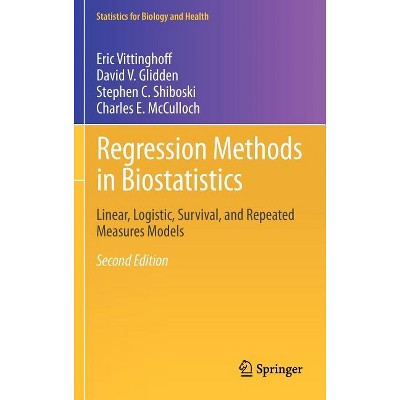Survival Analysis - (Statistics for Biology and Health) 2nd Edition by John P Klein & Melvin L Moeschberger (Paperback)

About this item
Highlights
- This text provides an introduction to modern techniques in survival analysis at a level suitable for most researchers.
- Author(s): John P Klein & Melvin L Moeschberger
- 538 Pages
- Medical, Biostatistics
- Series Name: Statistics for Biology and Health
Description
Book Synopsis
This text provides an introduction to modern techniques in survival analysis at a level suitable for most researchers. Counting methods have been presented in other books but only at a much higher mathematical level.Review Quotes
...An excellent graduate-level text for a course in survival analysis. Students will definitely find the authors' systematic treatment of topics, clear discussions and derivations, and numerous detailed examples useful. This book is also a good reference source for practicing statisticians, biostatisticians, and public health professionals with a basic statistics and applied statistics background. Although the examples are biomedical in nature, most methods described in the book for time-to-event data are applicable to other fields, including engineering and economics, and the book should be useful for researchers in these disciplines. The authors use semiparametric and nonparametric methods extensively, and also discusses parametric models. The "Practical Notes" and "Theoretical Notes" provided in many sections are very attractive and give readers information and citations beyond the material in the text." (Technometrics, February 2004)
"...The second edition of this book represents a well-organized and thorough exploration of many of the key ideas underlying survival analysis. The 18 datasets stemming from real-life experiences illustrate the concepts well. The Practical Notes and Theoretical Notes enhance understanding and provide the reader with guidance for further exploration and learning. This book is recommended as an up-to-date reference for statisticians and scientists engaged in the analysis of time-to-event data subject to censoring and/or truncation." (Journal of Biopharmaceutical Statistics, 2004)
"This book...offers an excellent course in survival analysis for Masters-level students or indeed for statisticians who wish to extend their knowledge of this subject...The authors treat the subject from a classical point of view and the mathematical level is compatible with that. A brief review of the alternative development of the subject through counting processes is given in Chapter 3 and further references and discussionare given in the theoretical notes that are part of each chapter. The subject is developed mathematically, but strong emphasis is placed on the practical implementation of the techniques. Included in each chapter are practical notes that extend the theoretical developments in the text and discuss relevant computer programs." (Short Book Reviews)
"The book's most significant and possibly controversial feature is that the materials are carefully presented with little technical difficulty involved...This is designed to fulfill the authors' goal of making complex methods accesesible to applied researchers without a strong mathematical background. The authors obviously have a lot of experience in teaching at this level and in consulting wtih various investigators. This book has plenty to offer for a one-or two-semester course for nonstatistics majors." (Journal of the American Statistical Association, September 2004)
From the reviews of the second edition:
"For a statistician in the pharmaceutical industry, the new material in this second edition, such as the competing risks section, is directly relevant and in sufficient detail to be useful in practice. The examples used throughout the book are based on medical data ... . the data are well chosen and sufficiently complex to illustrate the methods very well." (Kim Hawkins, Pharmaceutical Statistics, Issue 4, 2004)
"This is the second edition of a text whose first edition has already established a place for itself in the library of many applied statisticians, particularly biostatisticians. ... the book achieves a comprehensive coverage of the topic of survival analysis in a biomedical context, which serves the needs of students and researchers in a manner that is both interesting and mathematically satisfying. It deserves its place in the library of applied statisticians." (Gillian Z Heller, Statistics in Medicine, Vol. 23, 2004)
"This book deals with the analysis oftime to event data, focused on applications to biology and medicine. ... The book can be used as a text for a graduate level course on survival analysis and also for self study. ... Each new tool is presented through the treatment of a real example. More advanced topics are given in separate chapters or sections. ... The exposition is clear, the book is very well presented and makes pleasant reading." (Ricardo Maronna, Statistical Papers, Vol. 45 (3), 2004)
"Comprising 13 chapters and 5 appendixes, with 97 illustrations and several exercises at the end of each chapter, this book is an excellent graduate-level text for a course in survival analysis. Students will definitely find the authors' systematic treatment of topics, clear discussions and derivations, and numerous detailed examples useful. This book is also a good reference source for practicing statisticians, biostatisticians, and public health professionals with a basic statistics and applied statistics background." (Nalini Ravishanker, Technometrics, Vol. 46 (1), February, 2004)
From the reviews:
"Applied statisticians and researchers in medicine will find this book ... very useful. A basic level of statistical theory is necessary to understand the material of this well written book. ... In every chapter, there are challenging and easy problems. It is suited for a graduate level course in survival analysis. The statistical tables and reference contain recent material." (Ramalingam Shanmugam, Journal of Statistical Computation & Simulation, Vol. 74 (5), May, 2004)



